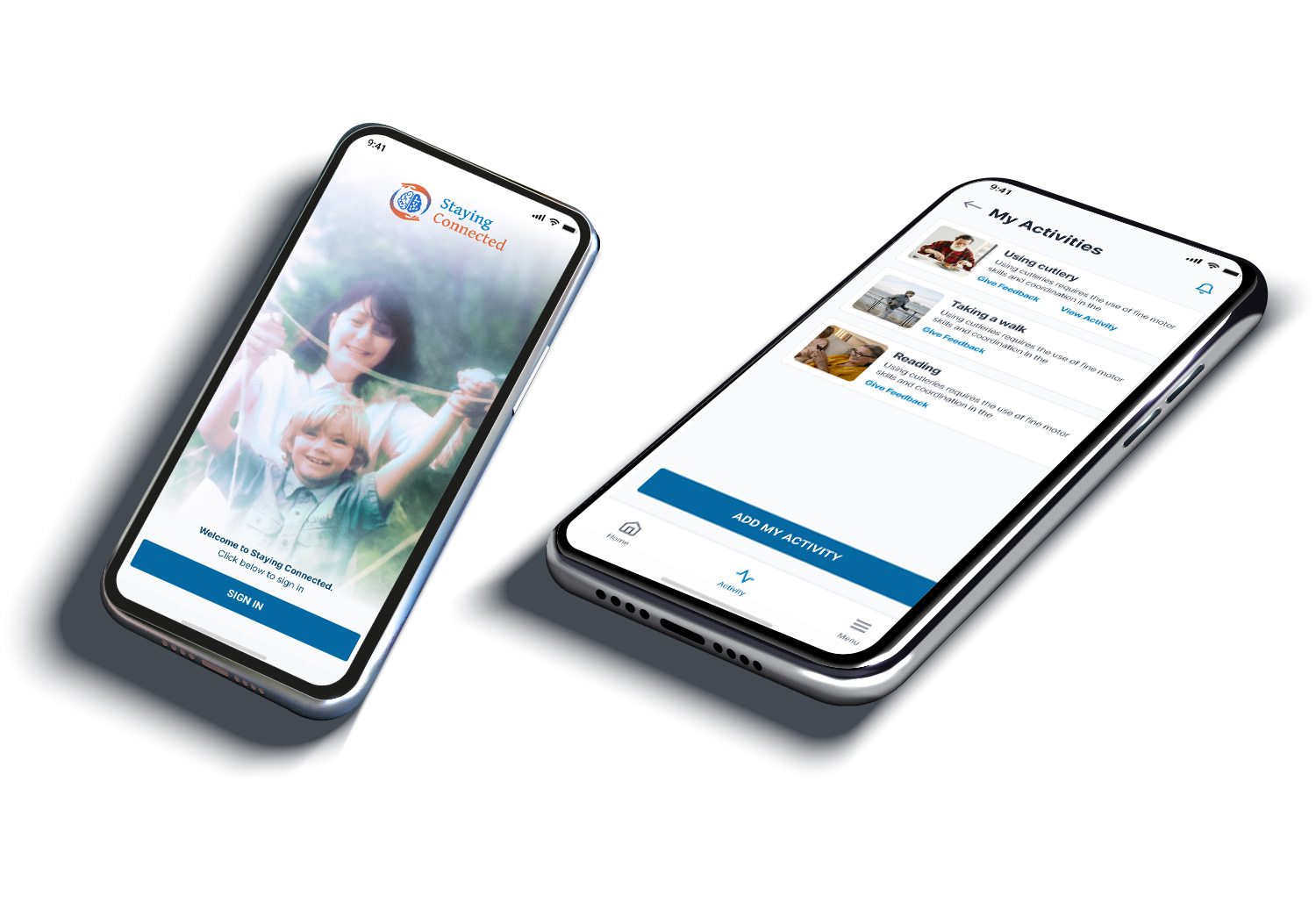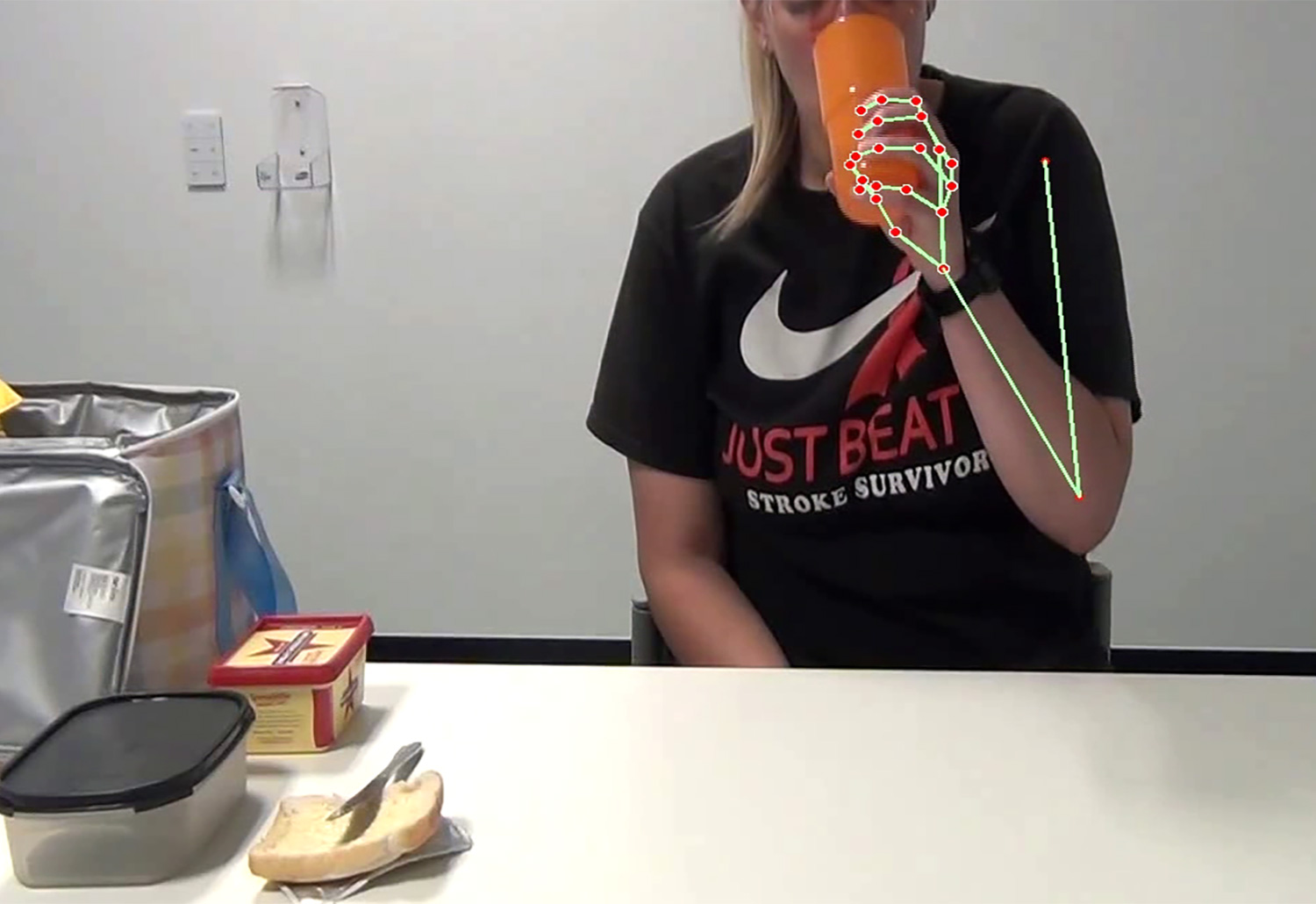The big difference is the incorporation of innovative technology and AI into the person’s rehab journey.

STAYING CONNECTED APP
The Staying Connected experience sampling app developed by us is designed to monitor what the person with stroke is doing in real time in their own environment. Survivors tell us what they are doing in real time and how they feel about doing it – we ‘beep’ them via the app, and they answer a quick 2-3 minute survey. This approach provides real time, remote monitoring of perceived challenge and skill in performing valued activities. It helps us monitor when an individual shows signs of readiness for recovery and which activities may be best to focus on in therapy. The experience of doing everyday valued activities is coupled with use of sensors (like wrist watches) to detect how much and how well the person is using their arms. The person can also access their personalised therapy plan via the app and track progress.

REMOTE HUMAN MOTION CAPTURE
Innovative real time motion capture without physical markers (computer vision). We use ‘computer vision’ science, which is a field of AI that allows us to ‘see’ and interpret images and videos. Our team have developed a novel web-based NeuroSmart Assessor (NSA) to help us capture quality and movement patterns of the upper limb. Importantly we can do this remotely without any equipment other than the internet. For example, during an assessment or therapy zoom meeting, a person might show us how they can drink from a cup or how they are performing their chosen activity. We can use a virtual exoskeleton to help capture the movement in real time from the video image. This can all be done in the comfort of their own home. We can then measure quality of movement, such as movement pattern, wrist speed, fingertip trajectories, movement smoothness, so that we can monitor recovery and provide feedback.